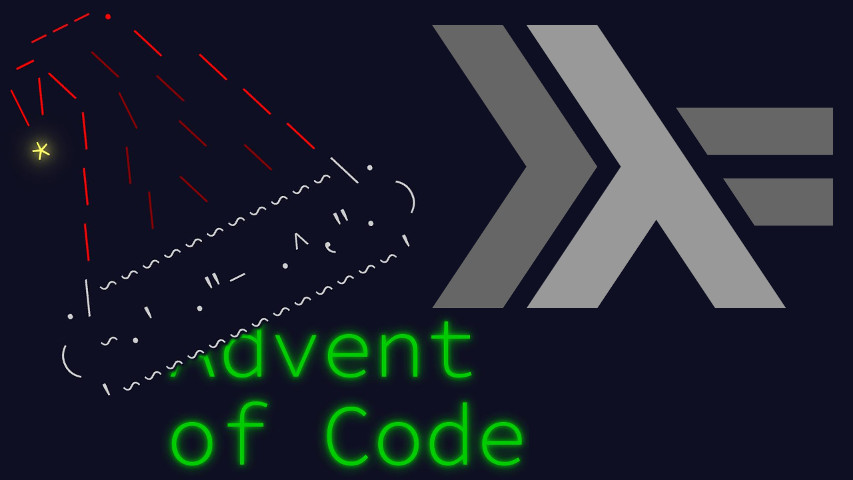Advent of Code today has us reimplements the 80s classic game “Snakes”, disguising the slithering reptile as a rope.
Keeping in the literate Haskell spirit, this post starts with two lines of imports.
import Data.Containers.ListUtils (nubOrd)
import Linear.V2 (V2(V2))That wasn’t so bad. Now we’ve imported V2, let’s define
our useful type out of it.
type V = V2 IntSo we have a snake. We’re given its head’s movements in some kind of textual form. We convert that to a nice and clean move vector.
parseMove :: String -> [V]
parseMove (words -> [dir,n]) = replicate (read n) $ case dir of
"U" -> V2 1 0
"D" -> V2 (-1) 0
"L" -> V2 0 (-1)
"R" -> V2 0 1Keeping track of the position’s head would then be a simple matter of folding on that move list from an arbitrary starting position. Arbitrary because we’ll only be counting distinct places.
headPath :: [V] -> [V]
headPath = scanl (+) 0The next primary operation is the act of following. Each snake ring follows the previous according to a simple algorithm: move as close as possible according to Manhattan distance, limiting displacement to 1 per axis and per turn. But don’t move so close as to meet; and don’t move either if already in contact.
Those two last conditions seem like a complication, but they can actually be summarized in a single condition.
followPos :: V -> V -> V
followPos src dst
| maximum (abs <$> delta) <= 1 = src
| otherwise = src + (signum <$> delta)
where delta = dst - srcKeeping track of a follower’s path is then the same simple matter of folding on its predecessor’s position. The starting position is the same.
followPath :: [V] -> [V]
followPath = scanl followPos 0Wrapping it up. Collect moves from input stream.
main :: IO ()
main = do
moves <- concatMap parseMove . lines <$> getContentsExpand the head’s path out of it.
let headPlaces = headPath movesExpand an infinite list of successor knots’ paths out of it.
let knotPlacess = iterate followPath headPlacesPart 1 asks for the number of distinct positions the first follower knot goes through.
print (length (nubOrd (knotPlacess !! 1)))Part 2 asks for the number of distinct positions the ninth follower knot goes through.
print (length (nubOrd (knotPlacess !! 9)))And that’s it! See you tomorrow!



